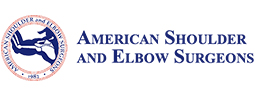Open Shoulder Surgery

Shoulder Anatomy
The shoulder is a highly movable body joint that allows various movements of the arm. It is a ball and socket joint, where the head of the humerus (upper arm bone) articulates with the socket of the scapula (shoulder blade), which is called the glenoid. The two articulating surfaces of the bones are covered with cartilage, which prevents friction between the moving bones. The cartilage is lubricated by synovial fluid. Tendons and ligaments around the shoulder joint provide strength and stability to the joint.
What is Arthritis?
When the cartilage is damaged, the two bones rub against each other causing pain, swelling and stiffness of the joint. This condition is called arthritis. There are many types of arthritis. Osteoarthritis (wear-and-tear brought about by old age) and rheumatoid arthritis (autoimmune disease) are two forms of arthritis.
What is Shoulder Joint Replacement?
Total shoulder replacement surgery is performed to relieve these symptoms. In this surgery, the damaged articulating parts of the shoulder joint are removed and replaced with artificial prostheses. Replacement of both the humeral head and the socket is called a total shoulder replacement.
What are the Indications for Shoulder Joint Replacement?
Total shoulder joint replacement is a surgery indicated for conditions such as osteoarthritis or rheumatoid arthritis when medication, injections, physical therapy, and activity changes do not help relieve pain. Your doctor recommends surgery when you have the following symptoms:
- Severe shoulder pain that restricts daily activities
- Moderate to severe pain during rest
- Weakness and/or loss of motion
Preparation for Shoulder Joint Replacement
To decide whether total shoulder replacement is a good option for you, your surgeon will evaluate your condition thoroughly.
Your surgeon reviews your medical history and performs a physical examination of your shoulder to assess the extent of mobility and pain. Imaging tests such as X-ray or MRI (magnetic resonance imaging) are ordered.
Shoulder Joint Replacement Procedure
The surgery is performed under regional or general anesthesia. An incision is made over the affected shoulder and the underlying muscles are separated to expose the shoulder joint. The surgery may be performed as an open surgery, where a large incision is made, or minimally invasive, where small incisions are made to insert an arthroscope (a thin tube with a camera and light source) and surgical tools.
The upper arm bone (humerus) is separated from the glenoid socket of the shoulder bone. The arthritic or damaged humeral head is cut and the humerus bone is hollowed out and filled with cement. A metal ball with a stem is gently press-fit into the humerus.
Next, the arthritic part of the socket is prepared. The plastic glenoid component is fixed in the shoulder bone.
After the artificial components are implanted, the joint capsule is stitched, and the wound is closed.
Postoperative Care for Shoulder Joint Replacement
After the surgery, medications and antibiotics are prescribed to control pain and prevent infection. Your arm may be secured in a sling or cast. The rehabilitation program includes physical therapy, which is started soon after the surgery and is very important to strengthen and provide mobility to the shoulder. You may be able to perform gentle daily activities two to six weeks after surgery.
Risks and Complications of Shoulder Joint Replacement
As with any major surgery, there may be potential risks involved:
- Anaesthetic complications such as nausea, dizziness, and vomiting
- Infection of the wound
- Dislocation, requiring repeat surgery
- Damage to blood vessels, nerves or muscles
- Failure to relieve pain
- Pulmonary embolism
- Wear and tear of the prosthesis
Arthroscopic Shoulder Surgery
Disease Overview
Injury and disease to the bones or soft tissues of the shoulder joint can make it unstable, and lead to pain, inflammation and reduced mobility.
What is Shoulder Arthroscopy?
Arthroscopy is a minimally invasive diagnostic and surgical procedure performed for joint problems. Shoulder arthroscopy is performed using a pencil-sized instrument called an arthroscope. The arthroscope consists of a light system and camera that projects images of the surgical site onto a computer screen for your surgeon to clearly view. Arthroscopy is used to treat disease conditions and injuries involving the bones, cartilage, tendons, ligaments, and muscles of the shoulder joint.
Indications of Shoulder Arthroscopy
Shoulder arthroscopy is indicated to treat the following shoulder conditions when conservative treatment such as medication and therapy fails to relieve pain and disability:
- Shoulder impingement
- Rotator cuff tear
- Frozen shoulder or stiffness of the shoulder joint
- Shoulder instability
- Biceps rupture
- Damaged cartilage or ligaments
- Bone spurs or bony projections
- Arthritis of the collarbone
Shoulder Arthroscopy Procedure
Your surgeon performs shoulder arthroscopy under general or regional anesthesia. You may be positioned lying down on your side with your arm propped up or sitting in a semi-seated position. Sterile fluid is injected into the shoulder joint to expand the surgical area, so your surgeon has a clear view of the damage and room to work. A button-sized hole is made in the shoulder and the arthroscope is inserted. Your surgeon can view images captured by the camera in the arthroscope on a large monitor. Surgical instruments are introduced into the joint through separate small holes to remove and repair the damage to the joint. After surgery, the instruments are removed, and the incisions are closed with stitches or small sterile bandage strips.
Postoperative Care for Shoulder Arthroscopy
After the surgery, the small surgical wounds take a few days to heal and the surgical dressing is replaced by simple Band-Aids. The recovery time depends on the type and extent of the problem for which the procedure was performed. Pain medications are prescribed to keep you comfortable. The arm of the affected shoulder is placed in a sling for a short period as recommended by your doctor. Physical therapy is advised to improve shoulder mobility and strength after the surgery.
Advantages of Shoulder Arthroscopy
The advantages of arthroscopy compared to open surgery with a large incision include:
- Less pain
- Fewer complications
- Shorter hospital stays
- Faster recovery
Risks and complications of Shoulder Arthroscopy
Complications of shoulder arthroscopy include infection, bleeding, damage to nearby nerves or blood vessels, or delayed healing after the surgery. In certain cases, a stiffness of the shoulder joint may occur after the surgery. It is important to participate actively in your physical therapy to prevent this from occurring.
Other Shoulder Procedure Topics:
- Shoulder Arthroscopy
- Open and Arthroscopic Shoulder Surgery
- Bicep Tendon Rupture at Shoulder
- Capsular Release
- Shoulder Stabilization
- Acromioclavicular Joint (AC) Joint Reconstruction
- Shoulder Labrum Reconstruction
- SC Joint Injury Reconstruction
- SLAP Repair
- Proximal Biceps Tenodesis
- Arthroscopic Bankart Repair
- Failed Shoulder Surgery
- Bony Instability Reconstruction of the Shoulder
- Intraarticular Shoulder Injection
- Arthroscopic Acromioplasty
- Latarjet Procedure
- Distal Clavicle Excision
- Pectoralis Major Tears/Repairs
- Mumford Distal Clavicle Excision
- ORIF of the Clavicle Fractures
- Subacromial Decompression
- Revision Rotator Cuff Repair
- Superior Capsule Reconstruction








